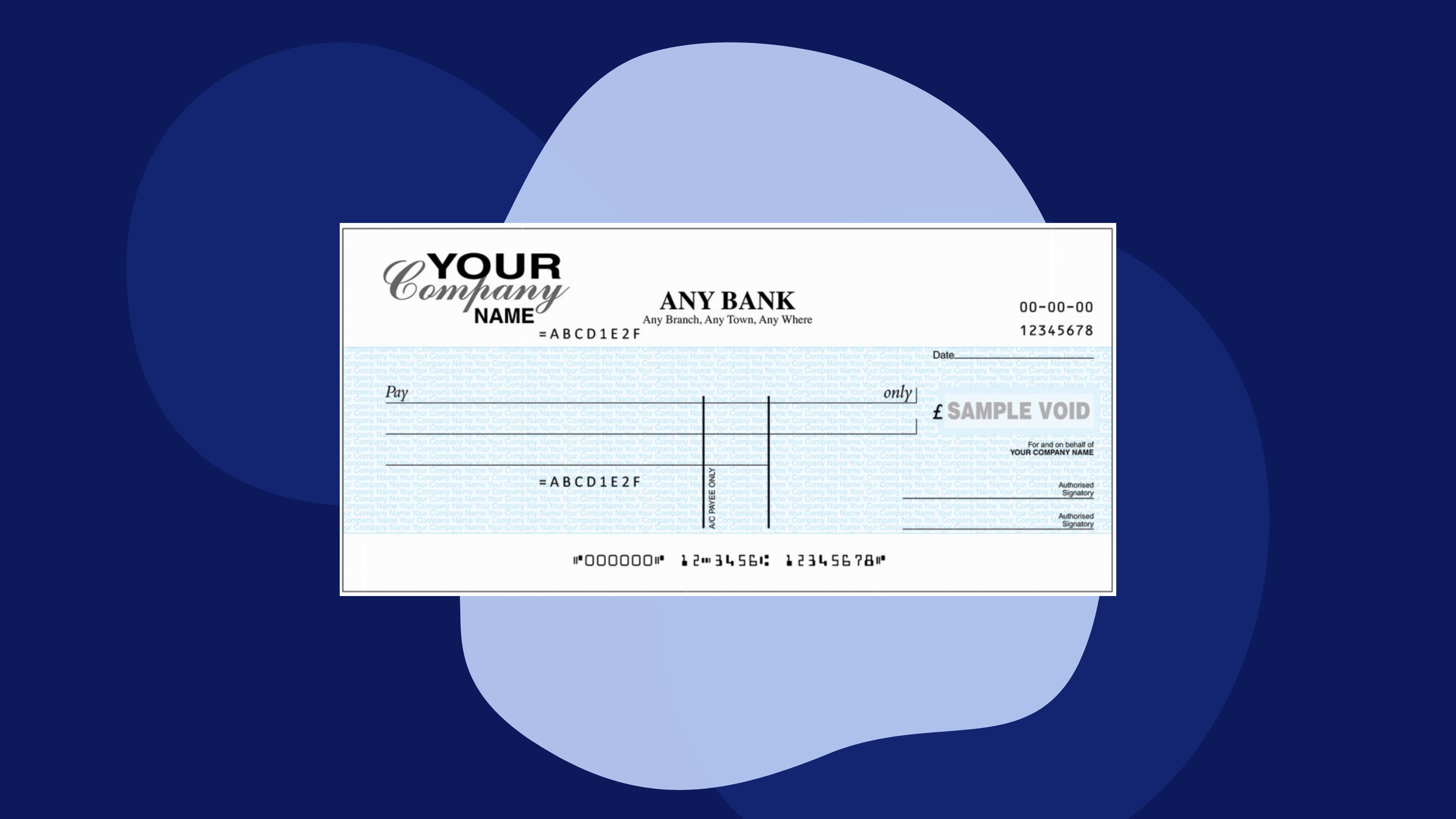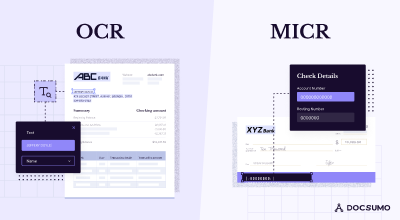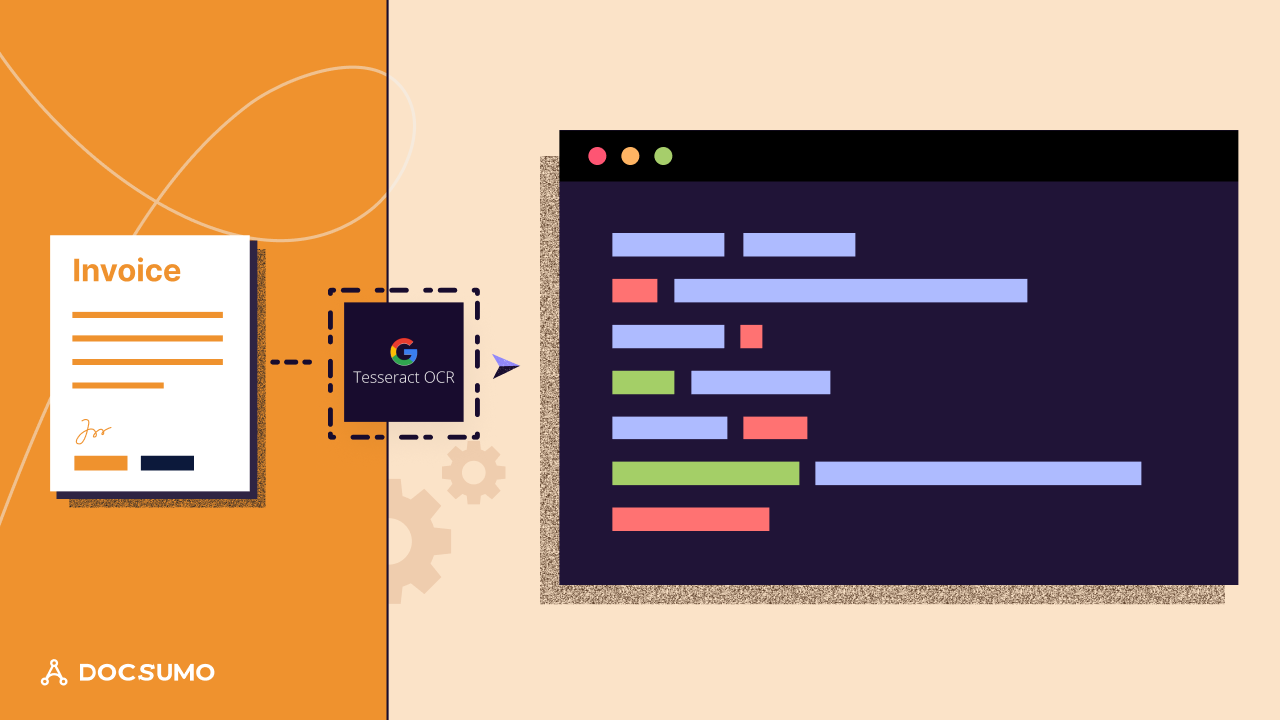Lenders need to extract data from bank checks for account verification amongst other documents. Different technologies are used for this purpose. The data extraction from checks starts with scanning image/pdf files. After the check is scanned, OCR comes into picture that works to extract different data fields from the check based on the trained model. The algorithm of the check identification and OCR method does the rest of the job.
What exactly is OCR check scanning and how does it work? Let’s find out in this blog.
Let’s jump right into it:-
What is OCR check scanning?
Lenders need to process multiple documents for loan underwriting - income and identity verification documents along with certain structured and semi-structured forms. Amongst other documents, they also need to process bank checks for account verification.
In this article, we discuss how OCR technology is used to extract data from bank checks.
Steps involved in the check scanning process are as follows:-
1. The first step is to identify the boundary of the check, and inspect:-
- if the border or edge matches the background color
- if the check is torn out
- if the image resolution is improper
The scanner detects the torn out checks, folded checks, and half image checks, and discards those checks from further processing.
2. The next step in the process focuses on extracting characters from the check. Each valid and useful information such as ‘depositor’s name’, ‘signature’, ‘amount’, etc. need to be clearly crawled. The check scanner uses the OCR technology to do the needful which efficiently extract information.
The OCR technology can be integrated as the backend model to the application or as the separate entitled model in the software.
How does OCR Check processing work?
Let’s take a deeper dive and understand the working of OCR check scanners. The process involves:-
Format Detection
When the depositor scans or uploads the check, it can be in several formats. The primary step in the process is to identify the format of the document (pdf, images, etc).
Image processing
After the format detection, OCR scanner processes the document. The algorithm converts the image into the ‘black and white’ version. It is processed as a bitmap for dark and light areas. The dark areas are the characters which are processed further.
Pattern Recognition
In this step, the OCR solution seeks for the specific orientation in the document. It can be related to font style, color, or the format of the check design. These are used to compare, process, and recognize alphabetic letters or numbers in the document.
Feature Detection
OCR also uses a feature recognition method in which it processes the algorithm in such a way that it predicts the feature based on its alignment, the curve it carries, etc. For instance, the word ‘AT’ can be predicted as two diagonal lines crossed with one horizontal line for ‘A’ and one horizontal line aligned with a vertical line perpendicularly for ‘T’.
Data Extraction
After the pre-processing of the document, the data is extracted in the desired hierarchy. It extracts handwritten as well as typed characters from the text.
Mapping Character
After the character is identified and mapped, it is converted to ASCII code for further data manipulation and correction of errors with manual reading. It makes sure that the complex extraction is handled accurately so that we can rely on the service in future and work on accuracy checks.
Now, let us move forward to discussing limitations and benefits of OCR check processing.
Benefits of OCR check data extraction
OCR check solutions have the ability to capture the data, process it, and manipulate for analytics and better insights. The benefits of OCR are many. Some have been wrapped together below:-
- Since bank checks are getting digitized, lenders have to deal with less paperwork thus easing the process with minimal human error.
- Fastening the process between the depositor and the lender.
- Extracting and populating data for efficient document management.
- Reducing the risk of manual data entry systems.
- Eliminated the torn checks and folded checks automatically.
- Making accessibility for valid information and sharing results quickly without delay.
Limitations of OCR check scanning
Each technology comes with some disadvantages. Let’s briefly discuss some points that limit the capabilities of OCR:-
- OCR check is an expensive system.
- OCR is not 100% accurate (it can be termed as overfitting which we certainly avoid ) and thus need manual checking.
- OCR works efficiently when it deals with printed text. It is not reliable for handwritten characters.
- Image quality can affect the accuracy of the OCR solution.
- Noise can reduce the accuracy of OCR checks leading to errors in data capture.
- It does not make sense to use OCR for a very little text extraction.
OCR has certainly smoothen the data extraction, and has advantages over manual data entry, but with the complexity of data growing each day and customers demanding better services, lenders are always on a lookout for a better option than template-based OCR.
To overcome the limitations posed by OCR, Docsumo employs Intelligent Document Processing (IDP) for complex document processing offering improved scalability and flexibility to lenders.
IDP has certain advantages to offer over OCR:-
Improved accuracy
IDP solutions are 99%+ accurate and can produce a 95%+ STP rate.
Template and format agnostic solution
Process checks from hundreds of banks with multiple templates and layouts.
Scalable and cost-efficient
No need to retrain the model if any bank makes changes to their check layouts, thus offering scalability and saving the retraining cost.
If you’re looking to digitize check processing and offer better services to your customers, schedule a free demo with Docsumo, now.



.png)



